1879
A ship called the
Ravenscrag arrives in Honolulu harbor bringing with it the Portuguese
instrument known as the braguinha, which is an immediate hit with
the Hawaiians.
The islanders rename it ukulele (pronounced
oo-koo-le-le in Hawaii), meaning "jumping (or leaping) flea." While
there are many stories about how the ukulele got its name, the most literal is
that a good player's fingers skipping about on the fret board resemble a
"jumping flea."
One
of the passengers on board the Ravenscrag, Manuel Nunes (1843-1922), plays a major
role in transforming the braguinha into the Hawaiian ukulele.
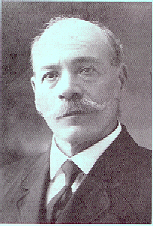
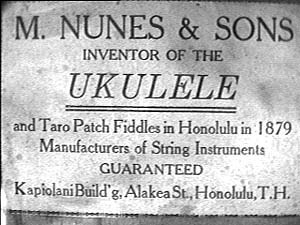
A photograph of Manuel Nunes, and an
interior label from one of his ukuleles.
Along with some of the other great Hawaiian ukulele makers--Dias, Santo and
later Kumalae and Kamaka--Manuel Nunes discovers that the wood from the local
Hawaiian Koa trees is exceptionally light and resonant for good ukulele making.
Indeed, the most common and most revered wood traditionally used by Hawaiians to
build ukes is from the beautiful and plentiful Koa tree. The early instrument
builders learn that Koa ukuleles sound great, and as they age they sound even
better.

A photograph of two early Nunes Koa
wood ukuleles.

Three native Hawaiian women, playing Uke,
taropatch, and guitar in 1892.
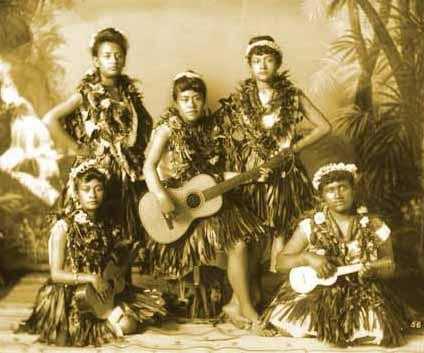
The same women and instrumentation, this time with
two Hula dancers, also in 1892.
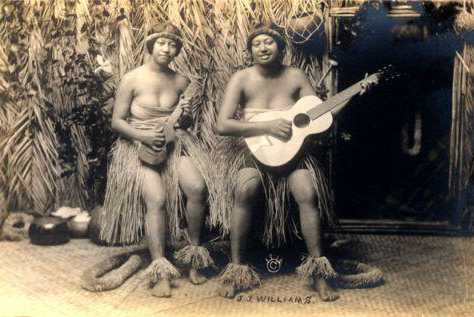
Two native Hawaiian women, playing a Uke
and a guitar (date unknown).
"What a mine of wealth these magnificent Koa
trees would be to the people who should transport their timber to the shore and
ship it to foreign countries! The Koa is the Hawaiian Mahogany. It takes a
polish like gold or diamonds. In the hands of foreign workmen, it might be made
as ornamental as precious marble. And here is a great belt of it around Hawaii,
broad and full enough to supply every city in America. These commercial
estimates are all afterthoughts. While under the fascination of the lavish
beauty of the woods, no sense is appealed to but the aesthetic."
-- George Leonard
Chaney, Aloha! A Hawaiian Salutation, 1879
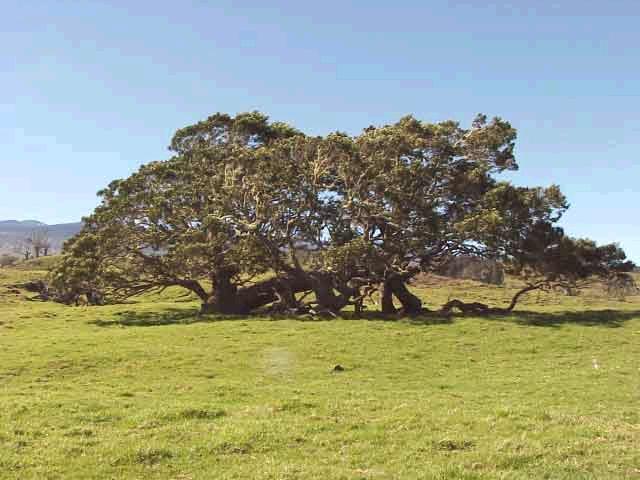
Koa is unique to Hawaii, and grows nowhere
else on planet Earth.
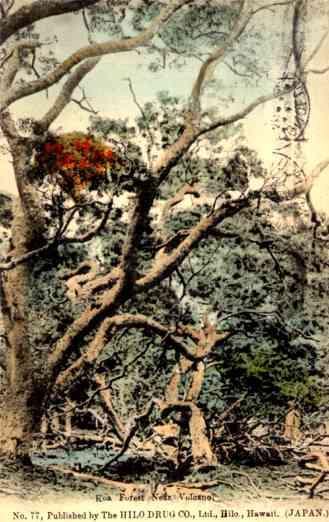
A 1908 postcard showing a Koa forest near a volcano.










